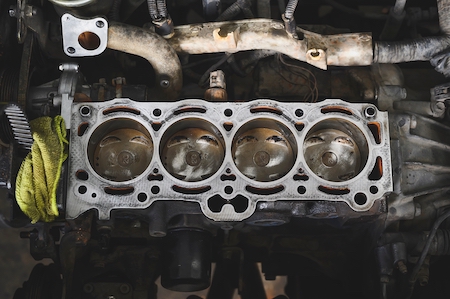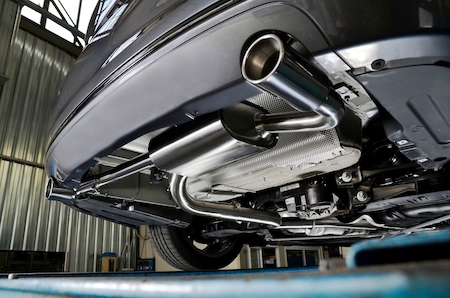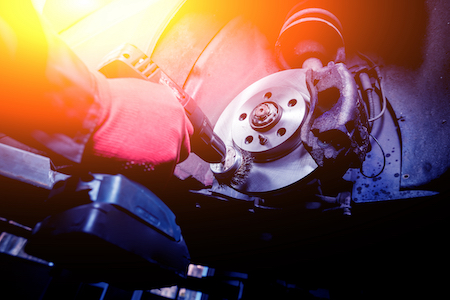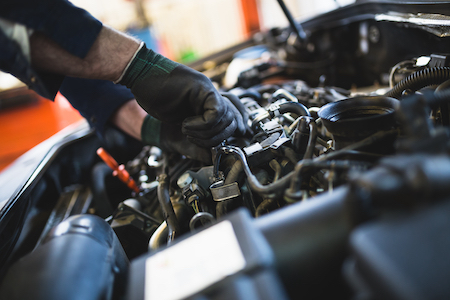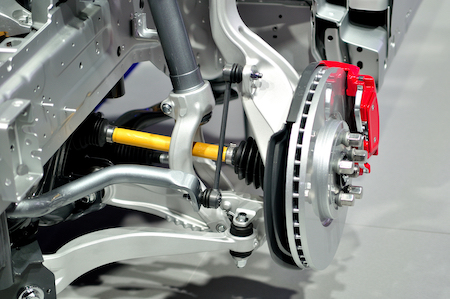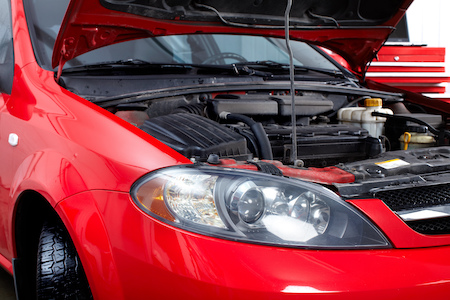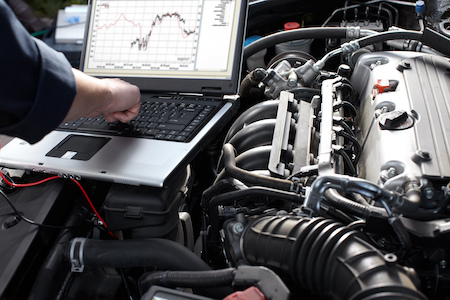At the center of your vehicle, the very heart of what makes your car operate, is the engine. Without an engine, your car would cease to go.
A car engine has dozens of pieces, including:
- Engine block
- Combustion chamber
- Cylinder head
- Pistons
- Crankshaft
- Camshaft
- Timing belt
- Valves
- Fuel injectors
- Spark plugs
- Oil pan
- Manifold
- Piston rings
- Flywheel
While it may seem easy to you – turn the key, and it works, a car engine is a complex machine designed to convert energy into mechanical energy, allowing the entire vehicle to function.
When it works well, it’s one of the most dynamic inventions we live with each day. However, if one of those components goes bad at any point, it can lead to problems.
Car engine repair keeps your engine running smoothly for the life of your vehicle.
How a car engine works
A car engine is an intricate machine that converts fuel into mechanical power. Without this, your vehicle would never move. It consists of several parts that work together in a complex sequence to keep the car running.
Most common car engines use an internal combustion engine. It burns fuel inside a cylinder to create power. This engine can run on gasoline, diesel, or other fuels. The motor contains several cylinders, each with a piston that moves up and down.
The intake stroke is the first step in the engine cycle. The piston moves down, which creates a vacuum in the cylinder. This vacuum pulls air into the engine through an intake valve. Some engines also have a turbocharger or supercharger that compresses the air, which increases the engine’s power output.
In the compression stroke, the piston moves back up and compresses the air and fuel mixture. This mixture is highly combustible and needs to be compressed to increase the pressure and temperature inside the cylinder. The compression ratio is critical in determining the engine’s efficiency and power output.
In the ignition stroke, the spark plug fires, which ignites the air and fuel mixture. This explosion creates a rapid expansion of gasses, which pushes the piston down. The energy released by the explosion powers the engine.
In the final exhaust stroke, the piston moves back up, forcing the spent gasses out of the cylinder through an exhaust valve. The gasses are routed through the exhaust system and released into the atmosphere.
The valvetrain is the system that controls the intake and exhaust valves. It is responsible for opening and closing the valves at the appropriate times. The camshaft, driven by the crankshaft, controls the valve timing. The camshaft has lobes that push on the lifters, opening and closing the valves.
The fuel system is responsible for delivering fuel to the engine. The most common fuel system type is a fuel injection system, where the fuel is pressurized and sprayed into the engine through a nozzle. The engine’s computer controls the amount of fuel injected into the engine, which monitors several sensors to determine the optimal fuel-air mixture.
The cooling system is essential for preventing the engine from overheating. The engine generates a lot of heat, which can damage the internal components. The cooling system circulates coolant through the engine to absorb the heat and transfer it to the radiator. The radiator dissipates the heat into the atmosphere.
Keeping your car engine running smoothly
Now that you have a deeper understanding of how a car engine works, it may be easier to understand how maintenance plays into keeping it running smoothly. It’s an intricate machine that works well when everything is in good operating condition but can quickly fail when something goes wrong.
Car manufacturers and repair shops all agree you should keep certain maintenance items on your calendar throughout the year. They include:
Regular Oil Changes – Regular oil changes are one of a car engine’s most critical maintenance tasks. The oil lubricates the engine’s moving parts and helps to keep it clean. Over time, oil breaks down, and its ability to lubricate the engine diminishes. Changing the oil and filter every 3,000 to 5,000 miles is recommended.
Air Filter Replacement – The engine’s air filter prevents dirt and debris from entering the engine. Over time, the filter can become clogged, reducing airflow and decreasing performance. A dirty air filter should be replaced every 12,000 to 15,000 miles.
Spark Plug Replacement – Spark plugs ignite the air-fuel mixture in the engine cylinders. Worn or dirty spark plugs can cause misfires, reduced performance, and reduced fuel economy. Replace spark plugs every 30,000 to 100,000 miles, depending on the plug type and the vehicle’s use.
Coolant System Flushing – The engine’s coolant system helps to regulate the engine’s temperature. Over time, coolant can become contaminated and lose its effectiveness. Flushing the coolant system every 30,000 miles or every 2 to 3 years helps to prevent overheating and engine damage.
Timing Belt Replacement – The timing belt connects the crankshaft and camshaft and keeps the engine’s valves and pistons in sync. A broken timing belt can cause severe engine damage. Replace the timing belt every 60,000 to 100,000 miles, depending on the vehicle’s manufacturer’s recommendation. Don’t wait until it breaks; keep this on your to-do list and replace it before it wears down.
Regular Tune-Ups – Regular tune-ups can help keep the engine running smoothly and efficiently. A typical tune-up includes replacing spark plugs, inspecting ignition wires, and checking the fuel and air filters.
Proper Driving Habits – It’s not just regular maintenance that keeps your engine in good working condition. Proper driving habits, such as avoiding hard acceleration and deceleration and maintaining a steady speed, can help reduce engine wear and tear.
What condition is your engine in?
It doesn’t take a lot of work to keep your car’s engine running smoothly. Instead, it takes regular inspections and periodic maintenance.
When did you last replace your motor oil or have your spark plugs checked? If you aren’t sure, it’s time to find a mechanic to help you care for your vehicle.
Stop by today.
We’ll help you care for your car and give it the longest life possible.

